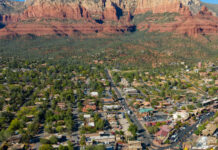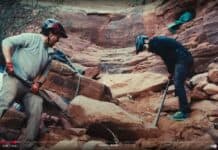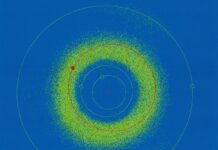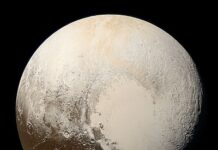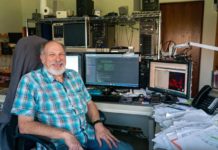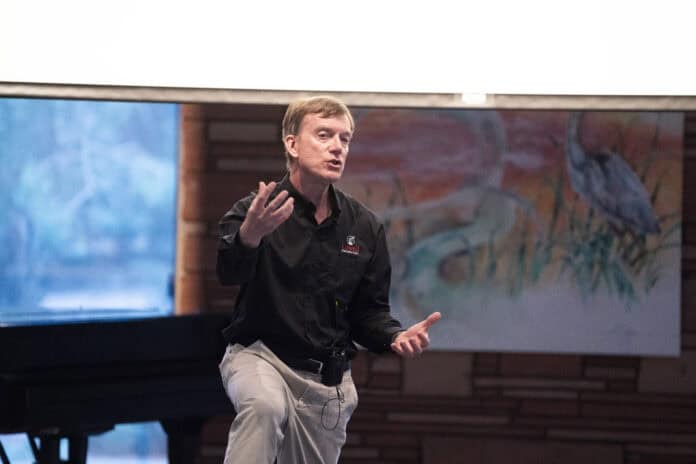
Lowell Observatory Executive Director Jeffrey Hall visited the Sedona Public Library on Wednesday, June 26, to discuss the Saturday, Nov. 16, grand opening of Lowell’s $53 million Kemper and Ethel Marley Foundation Astronomy Discovery Center.
Hall also discussed the design principles behind crafting an immersive science experience, the connection between humans and the universe and his upcoming departure from Lowell Observatory after more than three decades of work.
The Phoenix-based Kemper and Ethel Marley Foundation is a 501(c)(3) nonprofit that was formed in 1990 by Kemper Marley shortly before his death. Marley was one of the wealthiest people in Arizona and made his fortune in liquor distribution and ranching.
“In 1976, Don Bolles, an investigative reporter for The Arizona Republic who specialized in crime, was killed by a bomb concealed beneath his car [outside a midtown Phoenix hotel],” the New York Times wrote on June 28, 1990, in a story about Marley’s death.
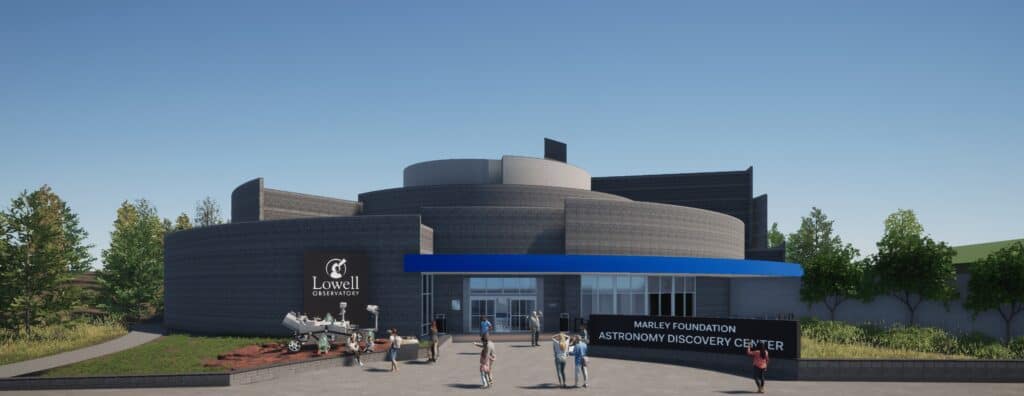
“John Harvey Adamson, the only person whose conviction in the slaying has been upheld, said in court documents that he had been hired by Max Dunlap, a wealthy contractor who had been reared by Mr. Marley, to kill Mr. Bolles for writing articles damaging to Mr. Marley.”
Marley was never charged with a crime, but his name remains associated with Bolles’ death from his wounds on June 13, 1976.
The 40,000-square-foot center includes a theatre, new viewing telescopes, a large-scale exhibit covering the evolution of atomic particles, a children’s exhibit gallery, a cafeteria and additional educational programing. Lowell’s goals is to have the center become a destination site for between 250,000 and 300,000 tourists each year.
“The Richard F. Caris Dark Sky Planetarium will function like a normal planetarium but with one exception: Instead of a dome, it will use Flagstaff’s stunning dark skies as a backdrop,” the observatory stated in a press release. “Situated on the roof of the ADC, visitors will have an uninhibited view of the dazzling night sky from the comfort of heated seats. Live interactive presentations given by Lowell educators will feature familiar elements of Lowell’s laser-guided constellation tours, with the addition of custom audio-visual components.”
Instead of a traditional indoor planetarium, Lowell opted for a 180- seat “Universe Theatre” with a 120-foot wide, two story high LED screen and an additional screen on the ceiling. This theatre, equipped with more than a quarter of a billion LEDs, will host various shows, including an orientation video about Lowell and a 30-minute live presentation on the role of imagination in science.
“[Science] is not just cold calculations,” Hall said, explaining the live show in development. “[It’s] thinking about really incredible weird things, like Einstein asking himself, ‘What, if one second isn’t always just one second? What if time is actually relative depending on your state of motion?’ It’s those kinds of crazy, harebrained ideas that led to some of the fundamental transformations in our understanding of the universe.”
Hall said the new facility would strive to evoke awe and a sense of wonder, such as by including a nearly-life-sized replica of the Perseverance Mars rover, complete with “googly-eyed Martians” to provide a photo opportunity for guests as part of the center’s humor, even though their existence has never been substantiated by peer-reviewed science.
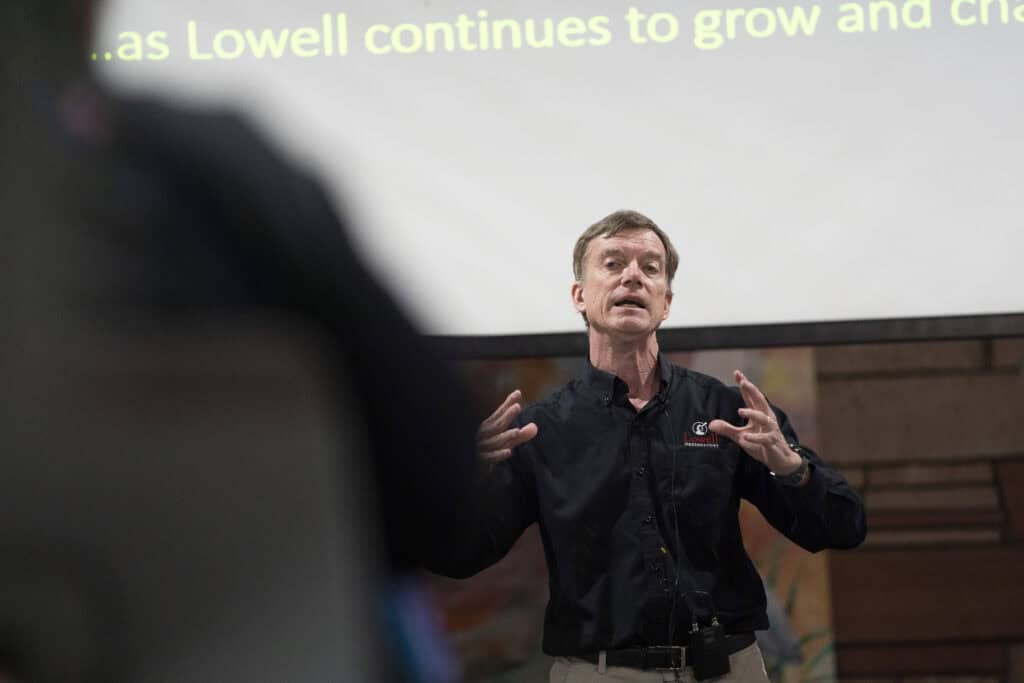
David Jolkovski/Larson Newspapers
“I have no problem with it,” Hall responded when asked about the inclusion of aliens. “That was [Percival Lowell’s] reason for coming out to Flagstaff and buying the Clark telescope. He was trying to find what he thought was evidence of a civilization on Mars.”
Lowell was convinced that Mars was irrigated by canals built by an intelligent civilization and built his eponymous observatory in Flagstaff in 1894 to prove his claim, which led to to his publishing “Mars and Its Canals,” a 400- page book on the topic, in 1911.
“I’ve been at the observatory for 32 years … completing this project is a logical stopping point, so I will be retiring as of November, when we open the new facility,” Hall said. “I’m going to make a whole career pivot into operations and fundraising consulting for nonprofits.”
Hall said that navigating the challenges of COVID- 19 was what he was most proud of during his tenure as director, a role he took on in December 2010.
“Embrace the unfamiliar, ” Hall said. “It plunged us into a completely unknown arena, and we were … improvising every day trying to wind your way through it. We pivoted into a lot of online programming, it was a good way, it prompted us to create some new kinds of programs we could do safely during the pandemic that we hadn’t tried before.”
By popular demand, Hall will be giving an encore presentation at the Sedona Public Library at a date to be determined. For more information about SPL events, visit sedonalibrary.libcal.com.



